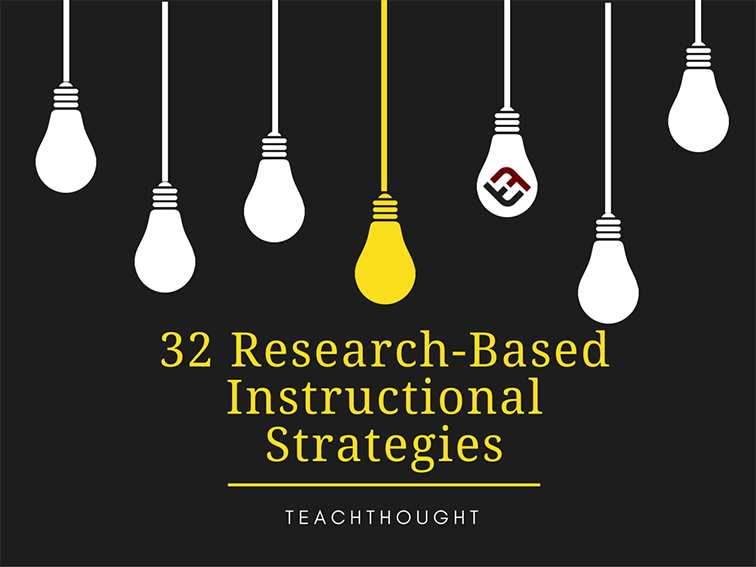
These 32 research-based instructional strategies include Setting Objectives and Reinforcing Effort/Providing Recognition.

by TeachThought Staff You want to teach with what’s been proven to work. That makes sense. In the ‘data era’ of education that’s mean research-based instructional strategies to drive data-based teaching, and while there’s a lot to consider here we’d love to explore more deeply, for now we’re just going to take a look at the instructional strategies themselves. A post is not the best way to share this kind of information, honestly. A video for each one might be better, so maybe a YouTube channel? Or a book, as Hattie and Marzano and others have done. Professional development may also work–take 12 strategies or so and work with teachers to integrate them into different kinds of lessons may be useful. (See Hattie’s Index Of Effect Sizes.) But upside to sharing this information as a post is that it can act a starting point to research the above, which is why we’ve tried to include links, related content, and suggested reading for many of the strategies, and are trying to add citations for all of them that reference the original study that demonstrated that strategy’s effectiveness. (This is an ongoing process.) How should you use a list like this? In 6 Questions Hattie Didn’t Ask, Terry Heick wondered the same. “In lieu of any problems, this much data has to be useful. Right? Maybe. But it might be that so much effort is required to localize and recalibrate it a specific context, that’s it’s just not–especially when it keeps schools and districts from becoming ‘researchers’ on their own terms, leaning instead on Hattie’s list. Imagine ‘PDs’ where this book has been tossed down in the middle of every table in the library and teachers are told to ‘come up with lessons’ that use those strategies that appear in the ‘top 10.’ Then, on walk-throughs for the next month, teachers are constantly asked about ‘reciprocal teaching’ (.74 ES after all). If you consider the analogy of a restaurant, Hattie’s book is like a big book of cooking practices that have been shown to be effective within certain contexts: Use of Microwave (.11 ES) Chefs Academic Training (.23 ES), Use of Fresh Ingredients (.98). The problem is, without the macro-picture of instructional design, they are simply contextual-less, singular items.” In short, these instructional strategies have been demonstrated to, in at least one study, be ‘effective.’ As implied above, it’s not that simple–and it doesn’t mean it will work well in your next lesson. But as a place to begin taking a closer look at what seems to work–and more importantly how and why it works–feel free to begin your exploring with the list below.
TeachThought is an organization dedicated to innovation in education through the growth of outstanding teachers.